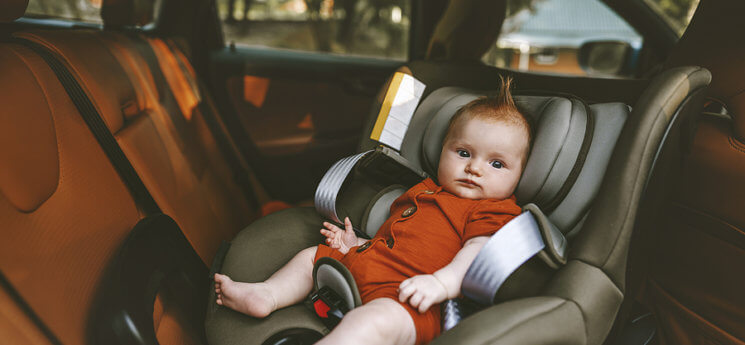In April 2012, the American Academy of Pediatrics updated their recommendations on rear facing car seats. Now, it’s recommended that children should ride in rear facing car seats until age 2 (or until they reach the maximum height and weight for their seat), and remain in a booster seat until age 8.
Top 5 Myths About Rear Facing Car Seats from Alisa Baer, M.D., aka The Car Seat Lady.
1. Some babies’ legs are too long
True, your leg size might make it painful for you to sit in a rear facing car seat. But that’s not the case for your child, whose flexible joints make riding rear facing car seats perfectly comfortable.
Think about it: Your 6-month-old happily sucks his toes, and your 18-month-old plays happily sitting on the floor with his legs in a pretzel shape. Having installed rear facing car seats for many 3- and 4 year-olds, I can tell you from experience that these older kids, who have far less legroom than your 18-month-old does, don’t complain about their legs hurting.
What about a broken leg? Surprisingly, studies show that forward facing kids break their legs more often in crashes than rear facing kids. A broken leg, however, is easy to fix; brain and spinal cord injuries are typically unfixable. A rear facing car seat virtually eliminates any chance of your child suffering a brain or spinal cord injury.
2. My toddler hates it!
Actually, your toddler just hates being strapped down, and doesn’t care if she’s in a rear facing car seat or a forward facing one. She is curious, newly mobile, and wants to explore her world—and car seat straps steal her independence.
But like other phases (remember how much fun colic was?) she’ll outgrow it. In my experience helping families over the past 14 years, I find that the age of hating the car seat is worst from 12-15 months of age, and gets a lot better by 18 months of age.
Regardless, just because your child wants something doesn’t mean that it’s good for her or that she should get it. (Think, staying up until midnight, eating ice cream every day…you get the idea!)
3. My child gets motion sickness
Motion sickness happens when the brain gets mixed messages about motion and can’t reconcile them. When your child’s body feels stationary from sitting in the car but his eyes tell his brain that his body is moving, the body feels sick. That means kids in forward facing car seats get queasy just as often as kids in rear facing car seats (and statistics prove it).
If your child complains of motion sickness, make sure he has the best possible view out the back window by removing your car’s headrest. Things move quickly from side windows, which can confuse the brain even more, but the back window shows movement happening at a much slower pace.
To discourage looking out side windows even more, install a sunshade. And try to occupy your child with songs and games instead of toys, books, or TV. The latter require your child to look down, which is a fast way to bring on motion sickness.
4. My 20-month-old is too big
Sorry, nearly every convertible car seat (including the inexpensive ones) can accommodate even very big toddlers rear facing until at least the age of 2. One of the key reasons that the AAP chose the age of 2 for their recommended minimum age to go forward facing is that 95 percent of 24-month-old weigh 35 pounds or less.
And since nearly every convertible seat goes rear facing until at least 35 pounds, every parent can follow the new recommendations and keep their child in a rear facing car seat until age 2.
5. My pediatrician said forward facing was OK
As a pediatrician myself, I can tell you that it’s humanly impossible for doctors to stay current on all the topics we’re required to know. Not only that, but many pediatricians never received any training on car seat safety either in medical school or residency.
But the fact remains: The American Academy of Pediatrics recommends that all kids stay in rear facing car seats until at least age 2, and ideally longer, until they reach the maximum height or weight for rear facing in their convertible seat.




